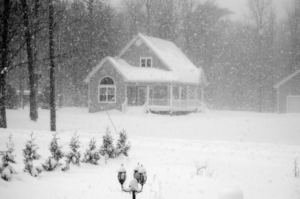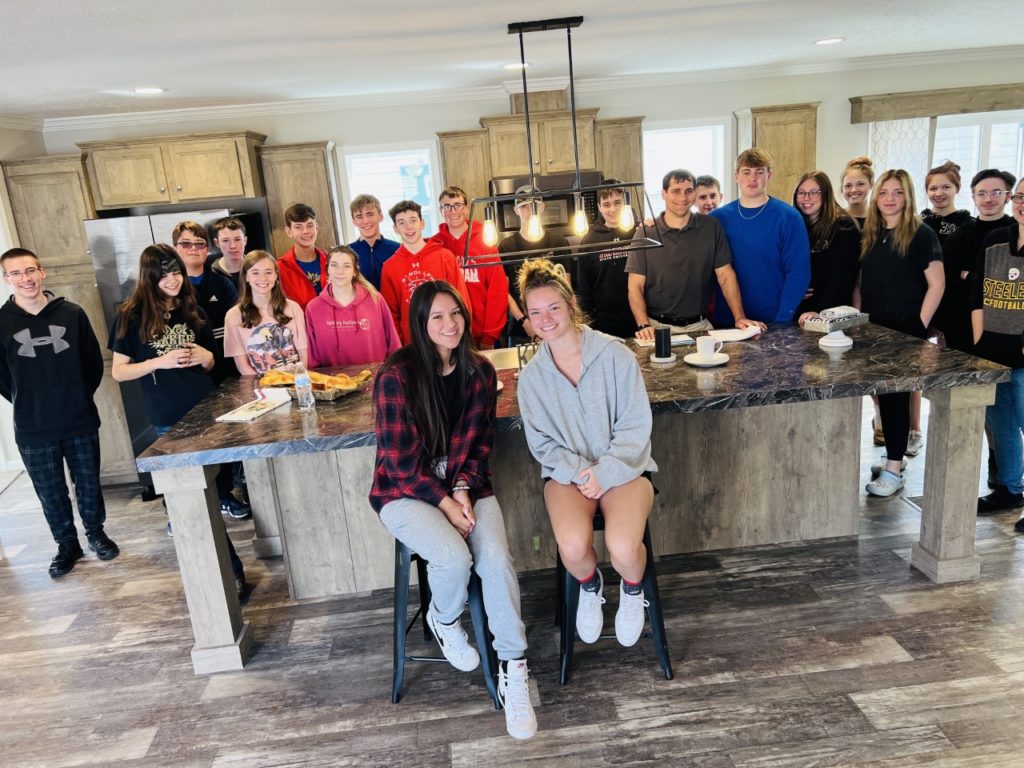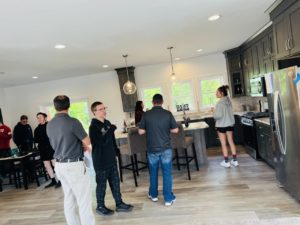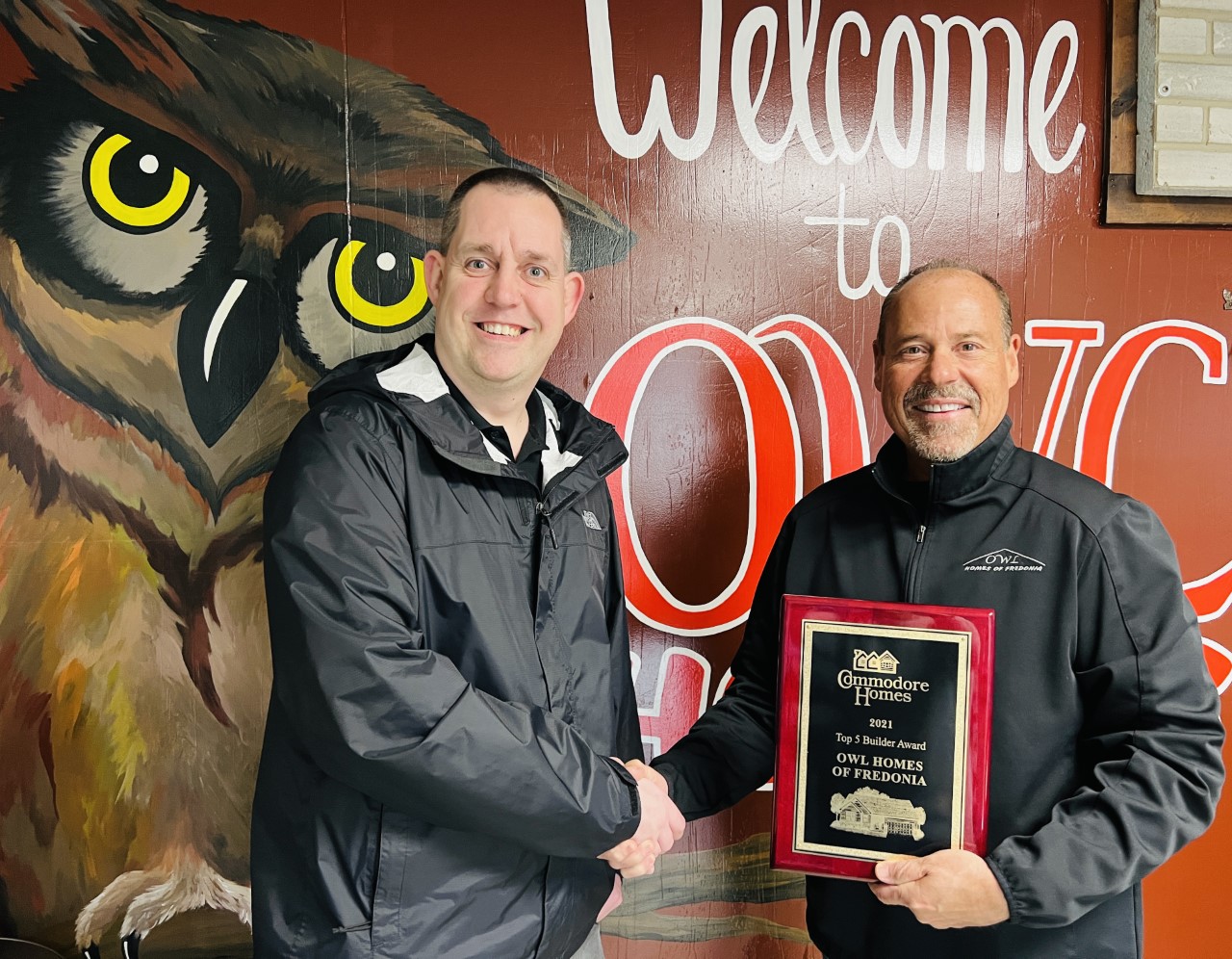A winterized home is a more comfortable home, a safer home, an energy-efficient home and an environmentally friendly home.
 When the snow is near it’s time to think about how to winterize your mobile home – whether you want to ensure warm feet, or are closing up for the season. The winter weather can be severe, and it is important that homeowners take precautionary steps in order to prepare and protect their homes from the cold and freezing temperatures.
When the snow is near it’s time to think about how to winterize your mobile home – whether you want to ensure warm feet, or are closing up for the season. The winter weather can be severe, and it is important that homeowners take precautionary steps in order to prepare and protect their homes from the cold and freezing temperatures.
Preparing your manufactured home for winter is not much different than that of a home built on site. However, there are some preparation and maintenance tips listed below that may be unique to a manufactured home. The following items are merely suggestions for maintaining your home and you should always consult your manufactured home owner’s manual for specific instructions.
1.Winterize Under Your Manufactured Home
The blocks or jacks that support your manufactured home should be in good condition. If they’re not, have them repaired immediately to prevent sagging, which can cause damage to windows, doors, joints, and walls.
Slightly loosen your home’s tie-downs if you live in an area where the ground freezes solid. The ground can “heave” as much as three inches during the winter, and tie-downs leave no place for the manufactured home to move. That can result in serious structural damage. Remember to tighten tie-downs again when thawing begins in spring.
Check your home’s skirting. It should be secure, but not so tight that it stops ventilation or vertical movement. Furthermore, shovel snow and ice away from the skirting to avoid denting or cutting off the air supply required for your furnace. Close all access points in skirting to keep rodents and other wild animals from living underneath your home.
2. Winterize Windows, Doors, Siding
Be certain your mobile home windows are in good repair. Windows that have quality storm window inserts and proper mobile home insulation will keep your energy costs down, which is the prime reason for you to winterize your home. The same goes for doors.
Even if your window frames and doors are caulked and weather-stripped properly, heat can still escape. Properly installed storm windows and doors can cut your home’s heat loss by 50 percent.
Check exterior doors for wear, tear, cracking or fading. Look for signs of leaking around the sill and threshold. Make sure weather stripping and seals are okay. Inspect under your manufactured home for sagging, torn or water spotted insulation. Carefully examine your exterior siding and replace any missing or damaged fasteners and screws.
Additionally, to avoid winter water damage, be sure to clean out and inspect rain gutters for leaks or holes. They should be slanted so water runs away from your manufactured home. Don’t forget to check and repair downspouts and extensions.
Put weather-stripping on exterior doors and windows. This is an inexpensive heat-saver, and another primary step in winterizing your home. To detect heat loss, just hold your hand at the edge of a window or door frame on a windy day. If you feel a draft, weather-strip the area.
If you want to have some fun with a cool, new and wildly helpful device, you can detect drafts and all kinds of temperature changes in your home, take a look at this handheld temperature gauge, which are sold at numerous online and brick & mortar marketplaces. You can shoot a beam across the room and test the temperature in different parts of your home.
3. How the Roof Affects Winterization
A well-maintained roof lowers your energy bills and prevents costly water damage. Seal the edges, seams or expansion joints of a metal roof every year. Use a roof coating suggested by a local dealer or service center, and apply to a dry, properly prepped surface. Make sure you apply the recommended thickness. Put a good seal around vent caps for the furnace, water heater, and exhaust fans.
Repair any punctures, cracks or breaks in your roof. Remember to tighten or replace any loose fasteners.
4. Frozen Pipes Are Big Trouble
Water lines should be protected by wrapping them first with an approved heat cable. Install the heat cable per the manufacturer’s instructions, which may vary according to the type of water riser in place. At the beginning of cold weather, check to be sure heat tapes are plugged in and in good working condition.
Heat tape is literally what it says it is! The tape contains a plug-in heating element that wraps around and warms water piping. Follow the manufacturer’s instructions carefully. If you have a heat tape already installed, make certain it’s still operative. Replace worn or loose heat tape. And, make sure you never overlap heat tape – it may cause a fire.
If you are planning on being away for an extended period of time, it is best to shut off water supply completely.
5. Sewer lines should be installed to allow proper angle for good drainage. If your sewer line has any sag or low spots, tie the line up to the frame or place a block underneath. Water will lie in these low spots and freeze.
6. Fix all plumbing leaks to keep sewer line from freezing. Sometimes toilet tank leaks can be small and unobservable. To check the tank for a leak, tie the float up in the evening; and if the tank is lower in the morning, you will know that you have a leak.
A simple tube of silicone caulk may be your best investment this heating season. Polyurethane caulking is a good all-around choice for sealing your manufactured home from drafts and leaks.
Gutter and downspout seams
Plumbing and furnace vent pipes
Around flashing seams between roof and siding
Along door and window frames
Through siding joints
Encasing the dryer vent
At the TV antenna wire entrance
At pipe feed-throughs
7. Avoid pouring small amounts of liquid into sinks and toilets, as a small amount of liquid by itself may freeze in your drain in severe cold weather. Do not leave a small stream of water running from the faucet as this may cause sewer lines to freeze.
8. On multi-section homes, make sure crossover pipe is installed to both halves of the home and are in good working condition. There should be no holes and no water in this pipe and it should be fully insulated.
9. Unhook garden hoses in order to allow freeze-proof faucets to drain.
10. Keep any fuel tanks as full as possible to avoid freezing.
11. Ensure Proper Furnace Function
It’s very important to make sure your manufactured home furnace operates safely and efficiently during winter weather. You can perform many routine furnace maintenance jobs, while others are best handled by a qualified repair person. Most furnace manufacturers recommend an annual professional inspection of fuel lines, safety controls, burner and flue pipe. Take a bit of time to check in with your utility company to see if they provide a free inspection.
To properly winterize your home, you should replace disposable furnace filters at the beginning of the season and check them often through the cold season. Remove and wash, brush or vacuum permanent filters. Likewise, remove the cover of the thermostat and vacuum away dust and dirt. Check the exhaust vent from the furnace. Clear obstructions like leaves or animal nests from the vent pipe. Keep roof exhaust vents clear of excess snow build-up.
Inspect blower motor. Vacuum any accumulated dirt. Inspect V-belt and pulleys for wear. If the belt moves more than an inch when you push it, tighten it. Check air intake. Most manufactured home furnaces draw combustion air from beneath the home, so keep no fewer than six vents in the skirting to allow free air passage.
12. Check the Entire Furnace Cabinet
Check the flue assembly for alignment and rigidity. It should run in a straight line from the top of the furnace through the ceiling. Be sure the flue is attached to the furnace collar. Check to make sure there is no loose wiring near the flue. If there is wiring in the flue area, move and secure it well away from the flue pipe.
Also, carpeting in the furnace compartment should be removed and replaced with fireproof material. Some manufactured home furnaces have wire mesh in front of the stack to prevent storage on top of the furnace. If this mesh is missing, replace it.
Clean out debris in the furnace area, and don’t allow even small amounts to accumulate. Never use your furnace closet for storage or drying clothes. This is a serious fire hazard.
CAUTION!: Never attempt to repair gas lines in your manufactured home. If you smell gas, call a repair person or your gas company immediately.
In addition, you should also properly maintain your space heater, fireplace or woodstove. Both electric and liquid fuel-powered space heaters must be placed at least 36 inches away from anything combustible. If you have a liquid fuel-powered space heater, use only the fuel recommended by the manufacturer. Never use gasoline or any other substitute fuel. When refueling, always turn off the heater and wait until the unit cools down before adding more fuel.
Have your fireplace chimney inspected and cleaned by a professional to winterize your home. Creosote, a chemical substance that forms when wood burns, builds up in chimneys and can cause a chimney fire. Always protect your home and family by using a sturdy fireplace screen when burning wood. Remember to burn only wood – never burn paper or pine boughs or coal. These can float out the chimney and ignite your roof.
Chimney connections and chimney flues on wood stoves should be inspected at the beginning of each heating season and cleaned periodically. Remove ash as it accumulates, and be sure to follow any additional maintenance instructions provided by the wood stove manufacturer. Burn only wood and be sure the wood stove is on an approved, fire-resistant surface to protect the floor of your manufactured home.
**Added Safety Steps to Keep Your Mobile Home Warm During Winter**
Finally, don’t forget to check your fire extinguishers and smoke detectors. Keep one fire extinguisher in the kitchen and another near the furnace. Use a multiple-purpose dry chemical extinguisher suitable for use on Class A, B and C fires. Small home fire extinguishers operate only five to ten seconds, so take careful aim before using. Test your smoke detectors often to be sure they’re operational, and replace batteries before the weather gets cold. You should have one detector located high on the wall or ceiling adjacent to your bedroom areas and another in the kitchen.
These items are merely suggestions for maintaining your home and you should always consult your manufactured home owner’s manual for specific instructions.
 Pictured is Mr. Perison and his class during the field trip inside of a Manufactured Home setup at Owl Homes of Fredonia.
Pictured is Mr. Perison and his class during the field trip inside of a Manufactured Home setup at Owl Homes of Fredonia.


